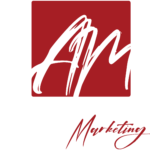In Marketing, Standing Out is a Good Thing. Inconsistent Branding is Not.
When you think of Nike, what comes to mind? The first thing that might pop into your head is the iconic “swoosh” logo. But Nike is so much more than just a logo; it’s a brand that represents quality, athleticism, and success across all platforms.
What about Coca-Cola? Most people know Coke as a refreshing beverage, but the company also has a strong branding strategy that encompasses all aspects of its business – from the product to customer service and marketing.
When you think about your brand – ask yourself – is your messaging consistent across all platforms, channels, appearances, and tools all the time – every time?
If not, then you’re not alone. Implementing a brand messaging strategy is challenging for businesses of all sizes, but it’s essential if you want to build an identifiable brand and keep your brand on a consistent, recognizable, and reliable path.
Here are four strategies to use to create strong, consistent brand messaging.
1. Develop “Branding Bible” Guidelines.
The first step to developing consistent brand messaging is to create guidelines for your team – it’s a “branding bible.” Think of it as providing the sheet music so everyone understands Who, What, When, Why & How to play and properly execute your brand and brand assets. This document should outline everything from your company’s mission and values to the tone and voice you want to use in your communications.
It should also include visual elements like your logo, color palette, and even the grammar you use in your marketing materials. This will guarantee that everyone on your team uses the same language and visual cues when representing your brand.
Your logo is especially important and should meet strict standards that clarify the specific colors, sizes, measurements, and file types that should be used.
2. Create Internal and External Branding Standards.
Once you have your branding guidelines, it’s time to start creating internal and external branding standards. These standards will help your employees use consistent email signatures, photos, and other resources when sharing across platforms.
Branding standards might include using specific language in your communications or following certain design guidelines when creating marketing materials. As in composing music, sometimes you’ll have to try different combinations until it looks and sounds the way you want it.
Two quick examples – if you want your social media posts to include your company logo, ensure your team knows where to find the logo files and how to properly size and format them. Email is far and away the most common method of daily communication and one of the best methods to spread your brand and logo recognition. Here are some interesting stats to consider by having email signatures as your company’s S.O.P.
- Only 23% of companies evaluate the effectiveness of email signature marketing.
- 62% of marketers and business owners use email signatures to promote their brands.
- 48% of marketers use email signatures to drive traffic to their websites.
- 98% of people use their name in their email signature.
- 73% of people use email signature generators to create a branded email signature.
- For 82% of respondents, brand awareness is the main purpose of email signature marketing.
Source: Soocial
3. Follow Specific Content Standards.
When creating content, have specific standards everyone on your team can follow. This includes everything from the topics you cover in your blog posts and webinars to how you format your email newsletter.
When developing these standards, consider your audience and what kind of information they’re looking for. Your content should clearly show the “who, what, how, why & when” when creating brand messaging.
4. Manage Perceptions. Use Brand Positioning that Represents Your Clients.

For example, if you’re a luxury car company, you might want to be seen as luxurious, sophisticated, and high-end. Or, if you’re a budget airline, you might want to be seen as affordable, convenient, and fast.
Whatever attributes you choose, be sure they represent your target market’s needs and wants.
Conclusion.
Establishing clear and consistent brand messaging with any business is essential to success. Following the steps above, you can develop a strong brand identity that resonates with your target audience.
Remember, brands are more than just a logo or color scheme – it’s the sum of your company’s communications, from how you answer the phone to the blog posts you write. By developing strong branding standards, you can ensure that your company always puts its best foot forward.
At Anvoye, we specialize in helping businesses develop strong, consistent branding. Reach out to us today to learn how we can help your business’ brand stand out from the rest.








